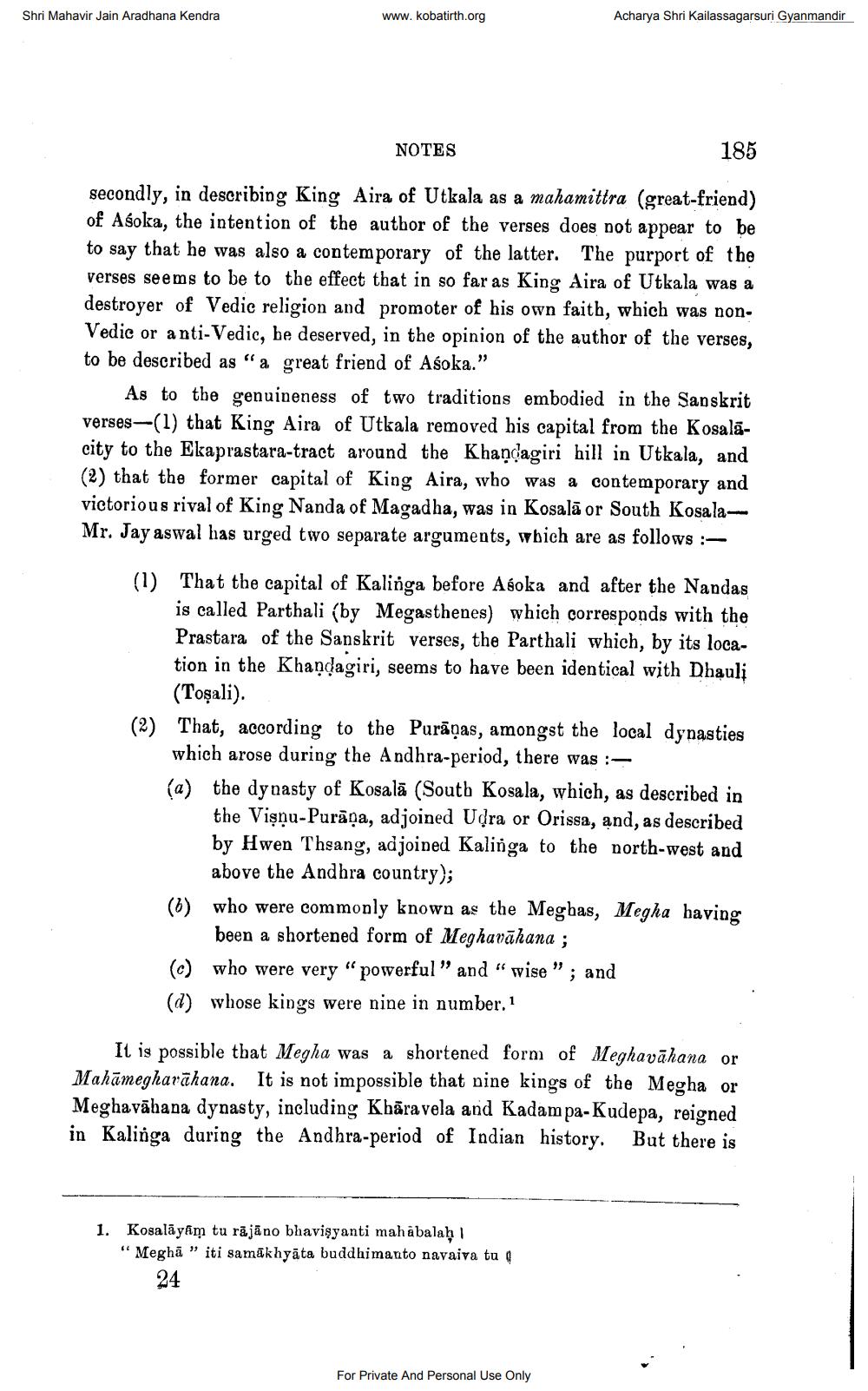________________
Shri Mahavir Jain Aradhana Kendra
www.kobatirth.org
Acharya Shri Kailassagarsuri Gyanmandir
NOTES
185
secondly, in describing King Aira of Utkala as a mahamittra (great-friend) of Asoka, the intention of the author of the verses does not appear to be to say that he was also a contemporary of the latter. The purport of the verses seems to be to the effect that in so far as King Aira of Utkala was a destroyer of Vedic religion and promoter of his own faith, which was nonVedic or anti-Vedic, he deserved, in the opinion of the author of the verses, to be described as “a great friend of Asoka."
As to the genuineness of two traditions embodied in the Sanskrit verses -(1) that King Aira of Utkala removed his capital from the Kosalacity to the Ekaprastara-tract around the Khanoagiri bill in Utkala, and (2) that the former capital of King Aira, who was a contemporary and victorious rival of King Nanda of Magadha, was in Kosalā or South KosalaMr. Jay aswal has urged two separate arguments, which are as follows :
(1)
(2)
That the capital of Kalinga before Asoka and after the Nandas is called Parthali (by Megasthenes) which corresponds with the Prastara of the Sanskrit verses, the Parthali which, by its location in the Khaņdagiri, seems to have been identical with Dhauli (Toşali).
That, according to the Purāṇas, amongst the local dynasties which arose during the Andhra-period, there was :(a) the dynasty of Kosalā (South Kosala, which, as described in
the Vişnu-Purāņa, adjoined Udra or Orissa, and, as described by Hwen Theang, adjoined Kalinga to the north-west and
above the Andhra country); () who were commonly known as the Megbas, Megha having
been a shortened form of Meghavāhana ; (c) who were very "powerful" and "wise”; and (d) whose kings were nine in number. 1
It is possible that Megha was a shortened form of Meghavāhana or Mahāmegharāhana. It is not impossible that nine kings of the Megha or Meghavāhana dynasty, including Khāravela and Kadam pa-Kudepa, reigned in Kalinga during the Andhra-period of Indian history. But there is
1. Kosalāyam tu rājāno bhavisyanti mah abalah "Meghā” iti samākhyāta buddhimanto navaiva tu
24
For Private And Personal Use Only




